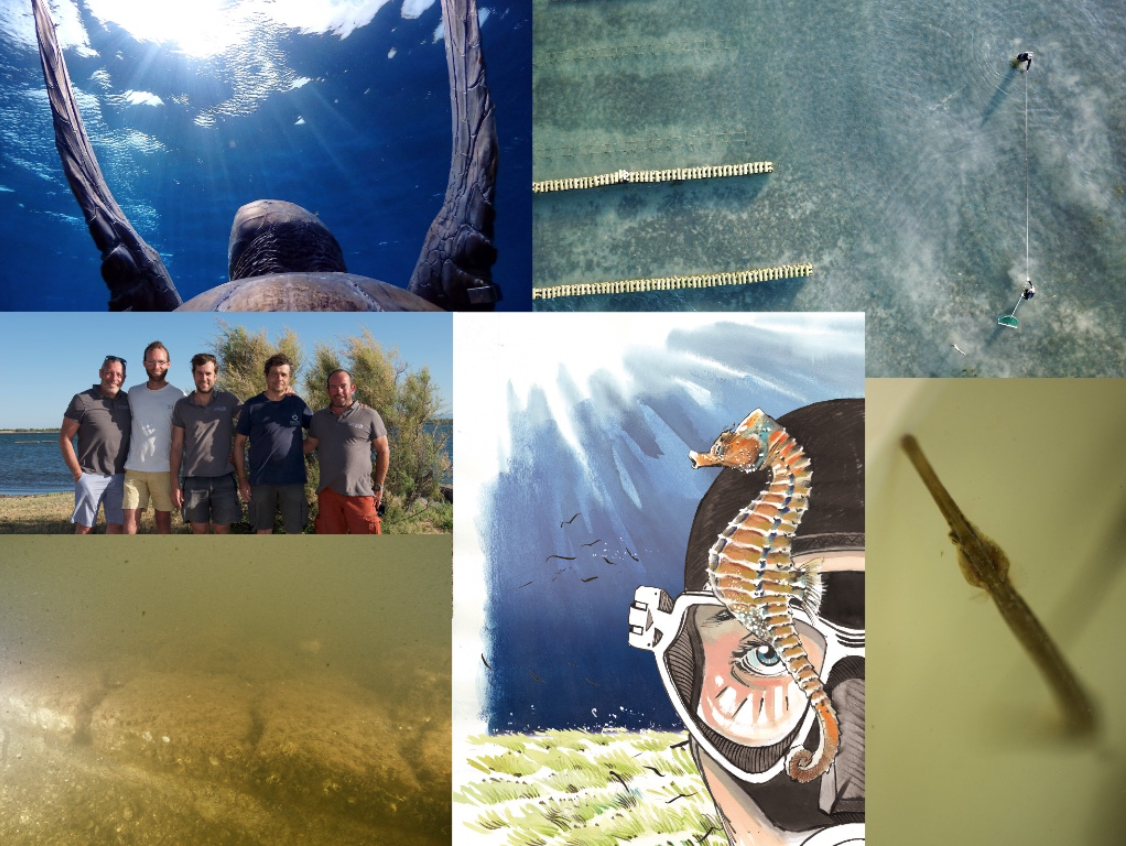
As usual, the Octopus Foundation has had a busy year. 2017 was particularly well filled with several projects to support local organisations and with numerous conferences to inform the public. Here is a short retrospective of the most beautiful events of the past 12 months.
Homerous’ incredible road back to freedom
At the end of 2016, the Foundation took an active part in Homerous’ return to freedom. This big Caretta caretta marine turtle had spent 8 years in rehabilitation at the Lampedusa Turtle Rescue Center. In order to follow Lampedusa’s most famous turtle, the Octopus Foundation glued an Argos GPS beacon to the top of her shell. For this particularly emotional project, we developed a free digital tool that allows anybody to track all types of animals that are tagged with satellite devices. Homerous’ journey was thus followed online by the public for 6 months, until the beacon’s battery died in April 2017.
The generous support of Geneva’s Inner Wheel Club
In May 2017, the Octopus Foundation was guest of honour of the Inner Wheel Club in Geneva. The beautiful evening took place at the Nautical Society of Geneva (SNG). Daniela Freggi, the Lampedusa Turtle Rescue’s director, joined us to talk about her project in Italy. Participants were particularly thrilled to place bids at the auction, in order to acquire beautiful sketches by Antoine Bugeon and photographs by Philippe Henry, allowing the Foundation to collect CHF 5000.-. A few months later, the Octopus Foundation received an additional donation by the Inner Wheel Club. The money will allow us to purchase a new GPS beacon. This new device will be glued on the shell of a male Caretta caretta to be released in Lampedusa in the spring of 2018.
Seahorses and Syngnathidae
This year, the Octopus Foundation was on the shores of the Étang de Thau and of the Bassin d’Arcachon, to launch the SYNTESE scientific program. Alongside the Peau-Bleue association, founded by French biologist Patrick Louisy, the team of the Foundation was able to field test the survey of seahorses and Syngnathidae in seabeds covered in seagrass. The objective of this program is to study the relationship between the presence of these species of fish and the health of the seagrasses. The several field missions helped to develop a specific tool to capture these elusive animals, which were in far greater number than what was previously expected. Furthermore, a morphophotographic work was done while scuba diving in order to highlight the differences there may be between various subpopulations of seahorses.
Last mission to Albania
In the autumn of 2017, the Octopus Foundation went to Albania for a field mission dedicated to the study of underwater archaeological remains. With the help of a drone, these numerous vestiges were spotted from the sky in the lagoon next to the antique city of Oricum. Despite the efforts over the course of two weeks, it proved impossible to date precisely the remains and define their exact original role. Yet, this initial study generate a vast quantity of documents that will one day help the archaeologists to thoroughly study the zone.
Inform the public
During the past year, the Octopus Foundation participated in numerous lectures given on various themes.
In October, Julien Pfyffer joined the Diving Club in Plan-les-Ouates (GE) to talk about the Bluefin tuna’s current situation in the Mediterranean sea. A successful conference that attracted dozens of keen divers.
In November, Julien Pyffer, Saïmir Sphuza, Gionata Consagra and Jean Terrier (Geneva’s cantonal archaeologist) met at the Montbenon Casino in Lausanne to give a lecture about Albania. The team presented the Oricum project that has been going on since 2012, and highlighted the historical and cultural potential found in this small Balkan country.
Early December, to finish the year on a high note, Julien Pfyffer was invited at the Lausanne School of Professional Commerce (EPCL) to give a lecture to a class studying World War II. In front of 35 captivated students, Julien told the tale of the Beaufighter, the wreck of the English fighter jet that was found in the Greek waters and studied by the team of the Octopus Foundation in 2015.
